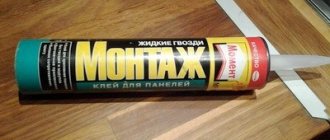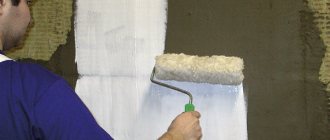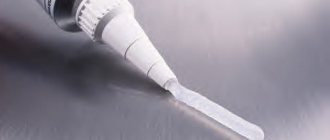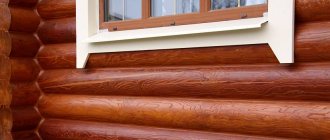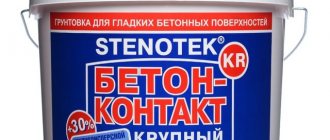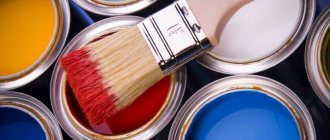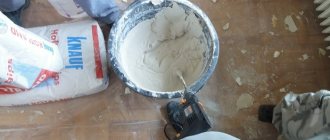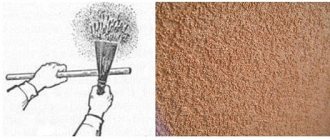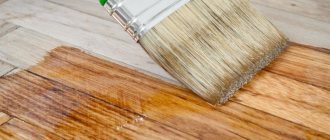Porous materials require additional processing. This is especially true for natural wood. It remains in demand both as a structural building and finishing decorative material. Working with wood involves using a coating of drying oil. The composition mainly plays the role of a primer, but can also be used for other purposes. The main feature of drying oil is that it dries for quite a long time. You cannot work with wood coated with this composition until it is completely dry. Therefore, when using drying oil, you definitely need to know how long it takes for it to completely set.
Operating principle of oil impregnation
The mass of natural oil in an open space under the influence of warm sunlight and oxygen acquires a thick consistency.
The substance applied in a thin layer begins to dry slowly, and as a result of polymerization, the coating turns into a high-density film. Drying is promoted by polyunsaturated fatty linoleic and linolenic acids (glycerides). Among the large number of vegetable oils, flaxseed and hemp oil have the highest ability to quickly dry. Sunflower, poppy seed, nut, rapeseed, castor and other raw materials almost do not thicken due to their low glyceride content. They are not subject to complete polymerization.
To significantly reduce drying time, vegetable oils are heated by adding a drier (metal compound). As a result of heat treatment, chemical compounds that slow down the polymerization process are broken down into inert substances . Using this technology, wood is impregnated - drying oil. Various compositions applied in a thin layer to wood, plywood, fiberboard or chipboard, dry (from 6 to 36 hours), form a hard elastic coating. On average, the compositions dry within a day.
The product impregnates the top layer of wood, creating a film with high adhesion .
It is used to treat surfaces before painting with oil-based compounds, which significantly reduces paint consumption. The treatment is also carried out before subsequent coating of wooden surfaces with wax.
Types of drying oil
All existing types of drying oil can be divided into the following categories:
- natural;
- semi-natural;
- combined;
- synthetic.
Natural types are made from oils of natural origin. Most often, the basis of natural impregnation is flax oil, although hemp or sunflower oil is also used. In natural solutions, a very small proportion of chemical components is acceptable. A desiccant is added to the composition - a substance that acts as a drying catalyst. Metal compounds - cobalt, manganese, lead, iron, etc. - are used as driers.
Natural impregnations are good, but quite expensive, and it is not practical to use them for treating building facades. In addition, they provide little protection against fungus, mold and insect pests. This type is used for diluting oil paints, as well as priming wood before painting it or applying varnish. Natural impregnations are also used as a basis for primer and putty mixtures. They are also used for processing wood in interior living spaces; natural drying oils are the least toxic, and in this respect they are better than other types. The drying time of such impregnation depends on the ambient temperature and at +20ºС it is approximately a day.
Semi-natural impregnations, or oxols, are also made from oil, most often sunflower. Their difference from natural ones is that they contain a large proportion of an organic solvent such as white spirit. Its amount in the solution can reach 40%. Oxols also contain about 5% driers.
Semi-natural drying oils are used in the same quality as natural ones, but more often for diluting paints or as a primer. They can be used to impregnate wooden materials in dry rooms. Oxols dry a little faster than natural solutions, while providing less drying oil consumption per 1 m2. In addition, they have lower manufacturing costs. The usual color of semi-natural drying oils is light brown.
Combined drying oils are very similar to semi-natural ones, but the percentage of white spirit in them is less, about 30%. Therefore, the main advantage of combined impregnations compared to semi-natural ones is much less toxicity. Combined drying oils are mainly used for the manufacture of oil paints. They often contain special components that increase the properties required for paints and varnishes. In addition, combined impregnations are used as a primer before painting a wooden product. Their drying time is up to 24 hours.
Synthetic drying oils, unlike natural ones, are made from artificial materials - polymers. The raw materials for them can be oil, coal or by-products of artificial rubber production. Synthetic impregnations have a dark tint and a sharp, unpleasant odor.
Synthetic drying oils are practically not used as an impregnation for wooden surfaces. They are usually used for diluting low-grade paints and varnishes or as a base for pastes and putties. Synthetics are the cheapest and lowest quality of all types of drying oil. It should absolutely not be used to impregnate surfaces inside residential buildings and premises due to its extremely high toxicity. Therefore, it is used for outdoor work.
Synthetic impregnations take a long time to dry and, depending on the composition, can differ significantly in physical properties.
Purpose and composition of drying oil
Treating wood with drying oil is used for painting walls and ceilings, as a primer for various types of materials - concrete, metal, wood. Drying oil is widely used for flooring and fence coverings.
It is used as an element in oil paints and can be added to putty solution. It will serve as a diluent and volume increaser for dyes.
Its decorative properties are appreciated; by saturating the surface of the wood with this product, it darkens the wood, and if you coat it with varnish on top, the product will be transformed.
To create a solution, heat treatment of different types of oils is used, to which additional substances are then added to create a film coating. Drying under the influence of heat, the layer becomes hard. The presence of a drier in the composition allows you to reduce the time required for drying of the coating.
Drying oil is widely used for flooring and fence coverings.
Drying oil: what is it, composition and properties
The conifer slats are probably pine. The first layer dried very quickly, in about a day. The second layer has been drying for a couple of months) and feels a little sticky to the touch. Why does it take so long to dry? Maybe there are some temperature conditions under which drying will proceed faster? Drying oil was produced in Voronezh.
Pinocchio
31.10.2011, 11:12
Is it just me, or does the second layer of drying oil always behave this way?
The first layer dried very quickly, in about a day. The second layer has been drying for a couple of months) and feels a little sticky to the touch. Well, this is normal for the second layer of drying oil (((especially since the room is rather damp. If the drying oil is based on fuz (a sediment of natural vegetable oils), then such drying oil will never dry out, and neither varnish nor paint will be able to paint over this disgrace.
Drying oil based on fuse has a red color and a dark sediment. If there was natural drying oil, it would dry faster!!!
Obi-Wan Kenobi
31.10.2011, 11:46
well, this is normal for the second layer of drying oil (((especially since the room is rather damp. If the drying oil is based on fuz (a sediment of natural vegetable oils), then such drying oil will never dry out, and neither varnish nor paint will be able to paint over this disgrace. Drying oil on The base of the fuse has a red color and a dark sediment. If there was a natural drying oil, it would dry faster!!!
The room is not humid, moreover, it is heated. Drying oil has a brownish color, the sediment is not visually determined.
31.10.2011, 14:19
All types of drying oils are used for impregnation and coating of wooden surfaces and various wood products. The weather resistance of most drying oils is inferior to other available surface protection products, so the use of drying oils in their pure form (not as part of paints) for outdoor use is limited. There is currently no point at all in using natural drying oil, the most expensive of all drying oils, for exterior work - the coating will have to be constantly renewed, which is very expensive and impractical. Using natural drying oil to pre-coat surfaces for painting is also pointless, since cheaper drying oils - oxol and alkyd - are better suited for this. Weather resistance is greatest with alkyd drying oils - an alkyd drying oil coating is approximately twice as durable as any oil drying oil. In any case, it is better to use drying oil in exterior work only as a preliminary coating for subsequent painting. For interior work, from the point of view of ease of use and environmental friendliness, natural drying oil has an advantage - it has virtually no odor, the coating does not emit substances harmful to health, and work on the coating is also not associated with harm to health. But due to the high cost of this drying oil, oxol (or alkyd drying oils) are more often used for interior work. Due to the odor of oxol, work with it must be done in a well-ventilated area. Until complete drying, the applied coating continues to emit white spirit vapors, which is why a characteristic odor remains in the room for up to several days. Composite drying oils are generally toxic, and not only during the drying period - a surface coated with a composite drying oil may continue to smell and emit harmful substances for several years after application of the coating. Therefore, composite drying oils can only be used for treating wooden and other porous surfaces for outdoor work, as well as in non-residential premises with good ventilation. They are not recommended for use in interior work in apartments and other residential premises. Surface treatment (https://ru.wikipedia.org/wiki/%D0%9E%D0%BB%D0%B8%D1%84%D0%B0)
Drying oil is a foaming agent made from vegetable oil and subjected to special treatment (prolonged overheating at high temperatures or oxidation). Also added to it are driers and solvents, which are used in the manufacture of paints, varnishes, primers and putties. Drying oil is used as a primer for wood and other porous materials before painting, for the manufacture of putty compositions, and also as an independent decorative coating.
According to their classification they are:
Natural;
Semi-natural;
Combined;
Synthetic.
Depending on which class the drying oil belongs to, it has its own drying time. Knowing the drying time of a particular class of drying oil, you will be able to work with this material much better. So, if it does not dry sufficiently, and you start painting the object, the coating will not adhere well and will begin to crack over time.
Required tools and materials
If impregnation of large surfaces is used, then apply the solution with standard tools:
- Brush;
- Roller;
- Spray gun;
- A rag made of natural fabric.
You will also need the drying oil itself and sandpaper.
You need to paint carefully so that the composition penetrates into all the details. Apply the composition in at least two layers, each layer must dry.
If impregnation of large surfaces is used, then apply the solution with standard tools.
What is drying oil and why is it needed?
So, drying oil is a liquid, flowing substance that resembles oil, but with a thicker consistency. The color can vary from dark brown to yellow-golden. The level of transparency can vary, although a completely opaque liquid is extremely rare and usually indicates a quality problem.
Initially, all such compositions were made exclusively with natural oils. Most often, linseed oil was used to impregnate wood, although in some cases sunflower or hemp oil was used. Scientific and technological progress has made its own adjustments and now semi-synthetic and synthetic drying oils have appeared.
As for the scope, it is very diverse. Such compositions are the basis for the production of oil-based liquid and thick-based paints. A whole range of putties and grouts are made from drying oil.
It acts as a primer for many compounds when processing metal or concrete. But the most popular is coating wood with drying oil.
How to dilute drying oil
If the solution has been standing for too long, and the seal of the container has been broken, then it must be diluted before use. Natural solvents are suitable for this. White spirit, turpentine, nefras, etc. can be used. If the product is already very hardened, fill it with thinner and leave for several hours, then stir and apply to the surface.
If the product is already very hardened, fill it with thinner and leave for several hours.
Drying oil for wood
Drying oil for wood is in demand today no less than in times of a total minimum of finishing materials - all the delights of oil paints, our older generation remembers them well; but in terms of horrors, you can also remember - when there was no choice, the walls were sometimes painted with nitro enamel (durable and ultimately beautiful, but you could breathe in oh-oh-oh). Drying oil for wooden cladding, frames, decor and other elements is a time-tested classic, both in the old days and today. Drying oils are distinguished by composition and properties, and there are only three main types of drying oils - natural drying oil, oxol and composites.
Natural drying oil
Natural drying oil is based on rapeseed oil (the cheapest), as well as sunflower, hemp or linseed oil. This composition indicates good environmental friendliness of the material. Natural drying oil has the least amount of adhesive (drier) - 3%; this additive is needed to make drying oil dry faster (everyone knows that this is a long process and cannot be compared with modern quick-drying paints). Natural drying oil is used to treat the inside of wooden walls of log houses, to dilute thick paints, to decorate furniture and various wood products. Natural drying oil is suitable for use in atmospheric conditions, but it is too expensive, there is oxol for this, and for non-critical structures on the street you can take a cheap composite - cheap and durable, although the smell is completely chemical, with a clean, almost imperceptible aroma of natural drying oil , corresponding to GOST - no comparison. (New standard for drying oils GOST 32389-2013, updated, but containing useful information GOST 7931-46)
Drying oil oxol
Oxol is also regulated, both production and composition (GOST 190-78). Application: indoors and outdoors, on wood and plaster. Oxol enhances adhesion and protects wood from bio-negativity. There are only 55% of natural oils in oxol, 5% of drier, plus solvent - gum turpentine, white spirit and others - in a volume of up to 40%. Oxol dries much faster than natural drying oil, and is not so expensive. Application of oxol:
- Impregnation of plastered substrates indoors and outdoors. A layer of drying oil slightly levels the walls, resulting in a reduction in the consumption of finishing paints and varnishes.
- To “revitalize” thickened oil paints, for dilution. There is more paint, which is economical, and the quality of the paint is no worse. Of course, only oil-based paints can be diluted with oxol.
- Never used for floor impregnation.
Based on their composition, oxol is divided into two types: Oxol B and Oxol PV. Both types of oxol are suitable for diluting paints, enhance the adhesion of paints to wood (plaster), and protect against harmful bio-factors. But Oxol PV is used only indoors, and Oxol V is used both indoors and outdoors. The secret is in the composition: Oxol B contains hemp and linseed oil in an amount of 55%, and Oxol PV is often produced using light petroleum-polymer resins, which is a synthetic analogue of natural oil. However, there are still manufacturers who use quite rare oils - grape, camelina, corn, safflower, and it is logical to use such drying oil for decoration, furniture, and handicrafts.
Drying oil combined
Composites made from drying oil are cheap and regulated by technical specifications, which already speaks for itself: the composition contains many petrochemical by-products, and most likely there are no natural oils at all. It is used only outdoors and preferably for the protection of non-residential buildings. Even if you want to save money, you don’t want to saturate a wooden gazebo with drying oil-composite - it has a very strong and persistent “chemical” smell. But the protective properties (against fungus and mold, beetles, rodents and atmospheric moisture) are excellent.
Application
Let's dwell a little on the technology of using drying oil to impregnate wood.
To begin with, all wooden elements are cleaned of dust, dirt and degreased. To apply a layer of drying oil, use a long-bristled brush, a paint roller, a paint sprayer, or a simple cotton cloth. The most important thing is that as much of the oil composition as possible is applied to the wooden surface .
After the drying oil is absorbed, you need to apply another layer and thus repeat the steps until the surface being treated is unable to absorb it.
Next, the product should be dried. To do this, it should be placed in a warm, dry place. There is no need to use additional heating systems.
Important: sometimes after using drying oil, a little impregnation remains, as well as the tools with which it was applied. It should be remembered that impregnation is a material with a high fire hazard class and any fabric that comes into contact with drying oil is prone to fire. Therefore, they must be stored in a well-protected place away from the source of fire.
Semi-natural, combined, synthetic – areas of application of drying oils
Semi-natural drying oils are generally light brown in color. The resulting film on a wooden surface is characterized by hardness and good gloss, as well as fairly high water resistance. Basically, semi-natural compositions are used in combination with other paints and varnishes or as a primer. Like natural drying oils, semi-natural ones do not have sufficient strength for processing floor coverings.
Manufacturers add modifiers to combined compositions that improve their qualities necessary for the production and dilution of thick paints. Combined drying oils are also used for priming wooden surfaces before plastering or painting.
Drying time
The drying oil hardening time directly depends on the type of impregnation and the method of its application:
- Small products are impregnated in a hot water bath - the processed material is placed in a tank with hot oil for 4-8 hours, and then dried for about 5 days.
- If you add a little red lead to such drying oil, the tree will be ready for use much faster - in 2-3 days.
- Oil impregnation with the addition of kerosene dries in about 48-72 hours, but compositions based on drying oil, turpentine and paraffin will be ready for use after 2 days.
- Drying oil containing wax also takes about 2 days to dry. In rare cases, it may take 3 days for complete impregnation and hardening.
Drying the surface after impregnation
How long the drying oil dries depends on the amount of drying agent, temperature and humidity, as well as the type and quality of the impregnation itself.
It has been noticed that solutions with polymetallic driers dry much faster. Natural drying oil made from flax dries in 20 hours when adding lead and 12 hours when adding manganese. If you add a mixture of these metals as a drier, the drying time will be reduced to 8 hours.
Temperature and humidity are very important for drying speed. Drying drying oil with cobalt drying agent will require 2 times less time, and with manganese drying agent - 2-3 times, if the thermometer shows more than +25ºС. The drying speed will decrease significantly if the indoor air humidity is 70% or more.
It must be remembered that working with natural drying oil requires increased fire safety measures. Failure to comply with the rules may cause the liquid to ignite easily.
So, how to dilute natural drying oil at home?
- Firstly
, the room where the work takes place must be well ventilated. - Secondly
, it is necessary to exclude any interaction with sources of ignition. - Thirdly
, in order to dilute thickened drying oil, you can add only high-quality substances. This can be castor oil, white spirit, various solvents for oil paints, as well as turpentine and organic acids. The substance is added little by little to the drying oil, observing the reaction of the liquid.
Consumption
Anyone who is going to use drying oil to paint wood, including floors, ceilings, walls and other surfaces, is interested in the question of what the consumption will be during work and how long does the drying oil dry ? Everything here is purely individual. Even if the packaging says that about 100 grams of raw materials will be used per square meter, you should always take into account the reserve that needs to be laid down at the time of purchase of about 30%. This is due to the preparation of the surface on which you will apply drying oil.
In order for the result to be close to the ideal value, you need to prime the surface. This applies to wooden structures, since the fibers are often clogged with dust, which leads to waste. Therefore, if you have eurolining, imitation timber, logs and others in wooden surfaces, then perform additional priming of the surface.
Processing wood with natural drying oil - application features
Most often, flaxseed, hemp and sunflower drying oils are found on the market. Natural linseed oil has a light transparent color. It is used for priming wooden, plastered and metal surfaces, as well as in the process of preparing putties for wood, putties and plasters, pastes and for diluting light paints. The use of natural compounds is allowed indoors. How long does it take for natural drying oil to dry on wood? At a temperature of at least 20 °C – about 24 hours.
Hemp drying oil has a pronounced dark color. The scope of application of the composition is the same as that of flax. But this liquid is used for diluting dark, thickly grated paints. Compared to previous representatives of the group, sunflower impregnation dries more slowly - after a day, undried liquid will still be felt on the surface. Its peculiarity is high elasticity, but in terms of hardness, strength and water resistance it is inferior to hemp and linseed oil.
Natural compounds are excellent for treating wooden surfaces of various instruments. Hunters love to soak gun stocks with them - after this the product lies very softly and warmly in the hand, it is pleasant to touch it with your cheek. However, this group is not suitable for impregnating floor coverings, since the film created by natural compounds does not have high strength.
Do I need to dry wood before painting?
Beginners often ask the question: Do I need to dry wood before painting? The question is really appropriate, because even experts do not give an exact answer. The thing is that the answer depends on the type of paint chosen. For oil-based products, it is necessary to treat the surface with drying oil before application. For alkyd enamels, similar woodworking is recommended.
The use of this pre-treatment of the surface for other types of paintwork materials may be undesirable; the coloring agent may not adhere to the coating, or may crack after time, this also applies to water-based and acrylic compositions.
For oil paints, it is necessary to treat the surface with drying oil before application.
How to speed up the drying process of drying oil on a wooden surface or chipboard
Unlike paint, which dries after the solvent evaporates, drying oil dries through the process of oxidation, that is, by contacting oxygen.
Many people ask what to do if the drying oil does not dry out. In reality, you almost always have to wait, and there aren't many ways to speed up the process. One of them is to use a heat gun. The thing is that the drying process of drying oil accelerates under conditions of high temperature and low humidity. And the fan heater does this job very well. By the way, previously it was practiced to apply drying oil hot just to increase the drying speed.
Another way is to use a drier. Red lead is ideal. Please read the instructions carefully before use.
A little history
What are driers? Dryers are catalysts (monocarboxylic acid soaps) needed to form a film of materials. Their use dates back more than four thousand years. In those distant times, natural materials based on manganese, lead and iron were used. Later, in the fourteenth century, copper sulfate began to be used, and already in the sixteenth - zinc compounds, in the nineteenth - lead and cobalt-based substances became the basic drier. In the twenties of the last century, it was possible to standardize the presence of metals in the dryer and make them convenient to use.
What is drying oil used for wood?
Quite often, when carrying out restoration work on wooden structures, a special product called drying oil is used. It is a transparent liquid of various colors: from yellow to cherry. The substance is based on vegetable oils that have been heat-treated in advance. Wooden surfaces are impregnated with drying oil and metal structures are wetted. When applied to a coating area, it forms a thin layer, which hardens into a protective film. This surface layer protects the structure of the building material from the negative effects of fungus and mold. The product can be used as an ignition, as well as in the form of an effective impregnation, a base for applying paints and varnishes
Recommendations for selection
The choice of impregnation type is influenced by several factors. The following items can be included in this list.
- To treat surfaces made of expensive wood, impregnations made from linseed and hemp oil are used.
- It is better to treat the surfaces of enclosing wooden structures from the outside with oxol or combined compounds.
- Synthetic liquids are suitable for coating wooden surfaces in non-residential premises. They process the wood of roof support structures.
- Treating large areas with Ansol brings significant savings.
- It is better to take drying oil in a transparent or translucent container. If sediment is detected, it is better not to buy such a product.
- The cost and type of solvents are of considerable importance. When using a spray gun, the impregnation is diluted with a solvent in a 1:1 ratio.
- When purchasing, it is better to contact a construction supermarket, where you can get information about drying oil from professionals.
Cost - from 200 rubles per liter. Containers with a volume of up to 10 liters are available for retail sale.
Additional Information
Drying oil can be used for priming not only wooden walls, but also plastered ones. It is also often used as an anti-corrosion coating for metals.
Natural drying oil. It consists of 95% vegetable oil, and only 5% of drier, a special additive that accelerates the drying of the treated surface.
It is unprofitable to use it for treating external surfaces due to the high financial costs, while this species does not provide 100% protection against fungus and insects.
Natural drying oil is used to dilute oil paints and prime wooden surfaces before painting or varnishing.
Oxol. It consists of 55% natural oil component, 40% solvent, white spirit, and 5% drier. The scope and properties of this type of drying oil are the same as natural ones, only it dries faster and costs less.
It also does not provide 100% protection. Learn more about why Oxol drying oil is needed and what it consists of in the video:
Composite drying oil is made entirely from artificial chemical components, in particular petroleum-polymer resins, and has a pungent odor.
Drying oils based on alkyd resins are considered the best. They are not as greasy and expensive as natural drying oils, and not as toxic as composite ones. But, nevertheless, it is better to use them for finishing outdoor country buildings (porch, swing, gazebo, summer kitchen) and for the interior rooms of country houses and apartments.
Drying oil is a good alternative to modern expensive means for impregnating and priming wooden surfaces.
But remember that some types can be toxic and are not suitable for use in residential areas.
If you need guaranteed protection from external factors, drying oil alone is not enough.
Why do you need drying oil for wood, if today there are a large number of other means for coating wooden surfaces? Drying oil is a traditional paint and varnish material that is widely used in construction and painting work. Since Soviet times, almost all wood has been treated only with this oily product due to its high qualities and low price.
Drying oils can be used as independent protection for wooden products, as a decorative dark coating, as a regular primer before finishing painting or filling untreated wooden surfaces, and as an additive for the preparation of various paint and varnish compositions.
Modern compositions are divided into several groups:
Saving Tips
Prices for high-quality drying oil can be expensive. Therefore, in order to save product, you can resort to making it yourself. The components are inexpensive, you just need to spend time on the cooking process itself. And be careful with hot oil. The cooking steps were described above. You can also resort to diluting the composition, although this may reduce the resulting effect.
You can resort to diluting the composition, although this may reduce the resulting effect.
Is it necessary to dry wood before painting? The answer is yes, if certain types of coloring compounds are used. Drying oil can be an excellent protective agent for wooden surfaces; natural compositions are suitable for treating surfaces inside the house. It is important to choose quality products.
Types of drying oil for wooden surfaces
Manufacturers produce various types of mixtures for woodworking. They differ not only in quality characteristics and properties, but also in price. Some drying oils are suitable only for indoor work, others are universal means for basic repairs. Drying oils are represented by the following types:
- natural;
- oxols;
- combined;
- synthetic.
Natural compositions
The natural mixture is obtained by exposure to high temperatures for 12 hours followed by oxidation. As a result, the output is a viscous liquid with a characteristic odor of plant material. Depending on the type of oil, the color may be dark brown or a lighter shade. High-grade drying oil is made from flax. However, it is the most expensive.
Natural compositions are a good impregnation of wood, creating a film on the surface, and serve to lighten. They are non-toxic and therefore recommended for use inside residential buildings. The only drawback is the long drying period, especially in high humidity. On average, drying oil for wood takes 24 hours to dry.
Consumption of combined solution per 1 m2
Before using the combined solution, the surface must be treated. Initially, dirt is removed, and the coating itself is degreased. The specialist advises: you should not ignore the presence of moisture, but apply the solution with a brush to small surfaces. If you need to process large volumes of work, it is better to use a sprayer or roller. You cannot skimp on processing, as you need the solution to saturate the surface well. For better penetration, it is better to use hot impregnation. On average, the consumption of combined drying oil per 1 m2 of wood requires 130-160 milliliters of the composition, if applied in several layers. And it will take no more than a day to dry. The normal temperature is considered to be about 20 degrees. When applying it, it is important to avoid drafts, then it will dry better. If the combined impregnation is too thick, it is recommended to dilute it to the desired mixture, which will significantly reduce the consumption of the mixture.
Important! Don’t forget to dispose of the solution when the work is completed. Store in a protected place from children, avoid contact with fire and light. As a result of storage, the mixture may thicken, then it is important to dilute it to the desired consistency.
Video description
From the video you can find out how the temperature of impregnation affects the depth of penetration using linseed oil as an example: To determine the naturalness of the material, it is enough to take a closer look at the transparency and color. Real products always have a tint. Additionally, you need to familiarize yourself with the certificates (conformity, hygienic for Oxol) and production regulations (GOST, TU).
In the case of preparing silverfish in drying oil, you must understand that the heat resistance of aluminum will be reduced to nothing. If drying oil from a synthetic group is used, then you should give preference to slate, which forms a weather-resistant film.
No sediment – drying oil quality Source obi.ru
It is better to treat expensive types of wood with natural drying oil. Fences can be impregnated with Oxol or a combined composition. When choosing drying oil, it is easier to evaluate it when it is in a transparent container - it is easier to see the presence of sediment. If it is available, then the quality of the product is low.
The process of breeding on drying oil
Serebryanka has a number of undeniable advantages:
- lies on the base in an even layer;
- it is resistant to mechanical damage and high temperatures;
- dries quickly;
- has a long shelf life and operation;
- has a wide scope of application;
- non-toxic;
- has a creative design.
However, despite the impressive list of advantages, this paint has a number of disadvantages:
- the mixture in dry form is explosive;
- the paint is not intended for application to alkyd or oil bases, since in reaction with them it bubbles and does not adhere well;
- it is not used for painting galvanized coatings, since such compositions are also susceptible to rust.
The process of diluting silver with drying oil is divided into three stages:
1. Preparation. Before proceeding with the procedure, you need to prepare the necessary tools and devices. For these purposes you will need rubber gloves, an unnecessary jar and a brush. In addition, you need to prepare drying oil, which you will directly use to dilute the silverfish in the required proportion. Drying oil must withstand temperatures up to 350 degrees.
2. Making the mixture. When mixing the ingredients, the paint should not be thick enough. If the density is higher than normal, white spirit or another solvent should be used.
Proportions
How to properly dilute silver linseed oil? In order for the composition to be stable and lay evenly on the surface, certain proportions must be observed. As mentioned earlier, the dilution ratio depends on the type of silverfish:
- pap1 – Take one part of powder for five parts of drying oil;
- dad2 – Take one part of powder for three or four parts of varnish.
The mixture is mixed well and a solvent is added at the end of the procedure.
Breeding Features
In addition to the listed nuances of diluting silver linseed oil, there are some features of this procedure:
- Synthetic varnishes are more suitable for diluting paint, but you need to work with them in an open, well-ventilated area.
- If you want to make a heat-resistant composition, then KO185 varnish is more suitable for such purposes. This paint is excellent for covering fireplaces and is diluted in a ratio of two to five (five varnishes, two powders).
- After mixing these components, the solution will still be quite thick. In order to correct the situation, white spirit, solvent, turpentine, toluene or other solvent mixtures are used.
- If the work is carried out with a brush or roller, then the proportions of paint and solvent are taken in a ratio of ½ to 1. If a spray gun is used, then the dissolution should be one to one.
- You need to stir the solution until it becomes homogeneous and small lumps are eliminated. On average, this process takes about ten minutes.
The process of diluting silver powder with drying oil is not particularly complicated. The main thing in this procedure is strict adherence to proportions and sequence of actions. Otherwise, the paint will lose its properties, will apply unevenly and will last much less.
It is also important in the process to ensure protection from contact of the composition with the skin and mucous membranes. Gloves and goggles are used for these purposes.
It is better to carry out work in the fresh air, which will protect you from inhaling harmful vapors of drying oil and solvent.
By silver we mean aluminum powder. When applied to a surface, it creates a beautiful layer of metallic color, reminiscent of the shine of steel. This product can be sold in dry, paste form; it is intended for making paint
It is important to know how to dilute silver for painting metal, and how to do it correctly
